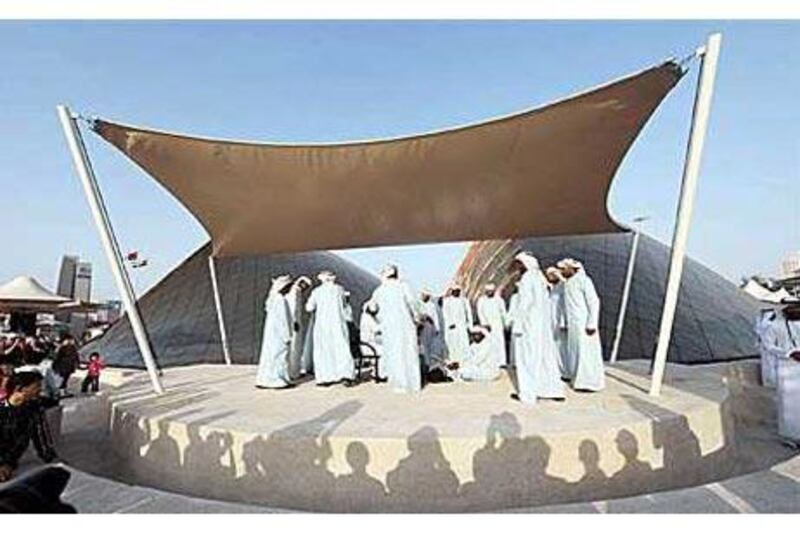The architecture is stunning and the films shown inside reveal both the rich history and fast-paced development of the Emirates. But the UAE pavilion at Expo 2010 has something even more significant for visitors to enjoy - the hospitality of the volunteer hosts.
A team of male and female Emiratis flew out shortly before the Expo began on May 1, and they have already proved a hit with the mainly Chinese people visiting the pavilion. Wearing traditional dress, the volunteers have been asked to pose for hundreds of photographs with visitors, have answered countless questions about life in the UAE and have even signed their autographs in the Expo "passport" that visitors fill in as they move between the pavilions.
The volunteers, from the Emirates Foundation's Takatof programme, will each stay for at least a month before being replaced by new helpers for the duration of the six-month Expo. Wafa al Katheeri, 28, said it was "my pleasure" to represent the UAE at the Expo, which is expected to attract 70 million visitors, about five million from outside China. "If I am a volunteer for my country, I return something of what they gave me," she said.
"We're answering the questions about our country - what we look like, what's our culture - we talk to them about everything. We're the ambassadors." A desire to tell people how the UAE has gone "from zero to one of the most important countries" led Kalthoum al Bloushi, 29, a technical officer with the Abu Dhabi Company for Onshore Oil Operations (Adco), to become a volunteer. "It's a big event and we're showing people from around the world what the UAE [is like]," she said.
Volunteers look after visitors while they queue to enter the pavilion. The UAE display is attracting large queues, with waits of up to an hour and a half to enter. About 13,000 people will be able to enter each day, which could total several million by the end of the Expo. The first team of volunteers is led by Awad al Dhaheri, 42, who comes from Al Ain and works for Abu Dhabi Motorsports Management. He said it was important for visitors to meet Emiratis because, although China and the UAE had "a good relationship economically and politically", Chinese visitors in general "don't know the UAE".
Volunteers wear national dress, which, Mr al Dhaheri said helped the pavilion to stand out from displays where workers don western clothes. "They are surprised to see these clothes," he said, referring to his kandoura. Another volunteer, Hamad al Qaydi, 25, a master's degree student from Abu Dhabi, said many showed a lot of interest in his kandoura. Visitors asked about the name and why it was white.
"It's amazing the people coming to us to make photo, photo, photo," he said. "Almost all the people haven't come to my country." Just as the volunteers are playing an important role in educating visitors about the Emirates, Mr al Dhaheri said they were also getting a lot back from their stay in China. "It's a lifetime opportunity," he said. "The experience of coming to China is first of all to learn about China. It's totally different. It's very good for us to learn about other countries.
"And [at the Expo] it's something different. There are 200 nationalities. It adds to our self-experience." The volunteers, who are staying in the Expo accommodation village, have their expenses covered and are given a modest daily allowance, but are not paid a wage. A team of locally hired Chinese hostesses, as well as security guards, are also assisting with the running of the pavilion. Salem al Ameri, who serves a wide-ranging organisational role as the pavilion's commissioner general, said without the Emirati volunteers, having a UAE pavilion at Expo 2010 would be "useless".
"There are both males and females - that's a message we're sending," he said. "We're very open, we're meeting strangers and changing the stereotype ideas." Many Chinese people had little knowledge, but great interest, about the life in the Gulf states as they entered the pavilion, Mr al Ameri said. "We're more mysterious to them," he said. @Email:dbardsley@thenational.ae







